Search for information
Malaysia's Intangible Cultural Heritage on UNESCO ListsMalaysia's Intangible Cultural Heritage on UNESCO Lists
April 23, 2025, 2:29 pm EDT
This ancient form of theatre was created by the Malays in Malaysia. It combines performance, vocal and instrumental music, gestures, and elaborately crafted costumes. Originating from the villages in the state of Kelantan in the northwest of Malaysia, Mak Yong is mainly performed as entertainment or as a ritual related to healing practices. Experts believe that Mak Yong emerged long before the Islamization of the country.
Until the 1920s, it was performed in the royal theatre under the direct patronage of the Sultanate of Kelantan. Since then, this tradition has been carried on in rural settings while still maintaining the sophistication that was upheld in the court, such as the intricately designed costumes.
Mak Yong performances typically begin with a sacrificial ceremony, followed by dance, acting, and music, as well as improvised monologues and dialogues. A single story can last up to three hours and may be staged over several consecutive nights. In traditional rural settings, performances are held on a temporary open-air stage constructed from wood and palm leaves. The audience sits on three sides of the stage, while the fourth side is reserved for the orchestra, which consists of a rebab (a three-stringed spike fiddle), a pair of gendang (double-sided barrel drums), and a tetawak (suspended gong).
Most of the roles are played by women, and the stories are drawn from ancient Malay folk tales, featuring characters such as royalty, gods, and clowns. Mak Yong is also associated with certain rituals in which shamans attempt to cure illnesses through songs, trance dances, and possession.
Mak Yong requires years of training and has been preserved mainly through oral transmission. In today's society, few young people are willing to undergo such a rigorous apprenticeship. As a result, this important tradition is experiencing a continuous decline, with issues such as a reduction in dramatic and musical repertoires and a shortage of experienced performers becoming apparent.

Source: Images from the Internet, if there is any infringement, please contact the removal of
Dondang Sayang is a traditional Malay art that is still passed down in four communities in Malacca: the Malay community, the Baba-Nyonya community, the Chetti community, and the Portuguese community. This practice combines music (violin, gong, and tambourine), songs, and chants, and features beautiful and melodious poetry.
These songs, also known as love songs, are used by the community to express feelings of love and to offer advice on specific topics such as love and kindness. During the era of the Malacca Sultanate in the 15th century, Dondang Sayang was performed at the ceremonies and events in the royal palace. Subsequently, this performance became widely spread among the relevant communities.
According to tradition, Dondang Sayang performances are accompanied by music and are sung by two singers of the opposite sex, who chant quatrains. Generally, Dondang Sayang singers are excellent poetry reciters. Regardless of age, occupation, status, or religious belief, Dondang Sayang performances are open to everyone. The art is considered a way to convey positive messages and share love, joy, and sorrow, strengthening community bonds.
Dondang Sayang performances are held regularly, especially during gatherings, festivals, and assemblies. Currently, there are also many cultural programs, activities, and training sessions available for those interested in participating and improving their singing and performing skills.
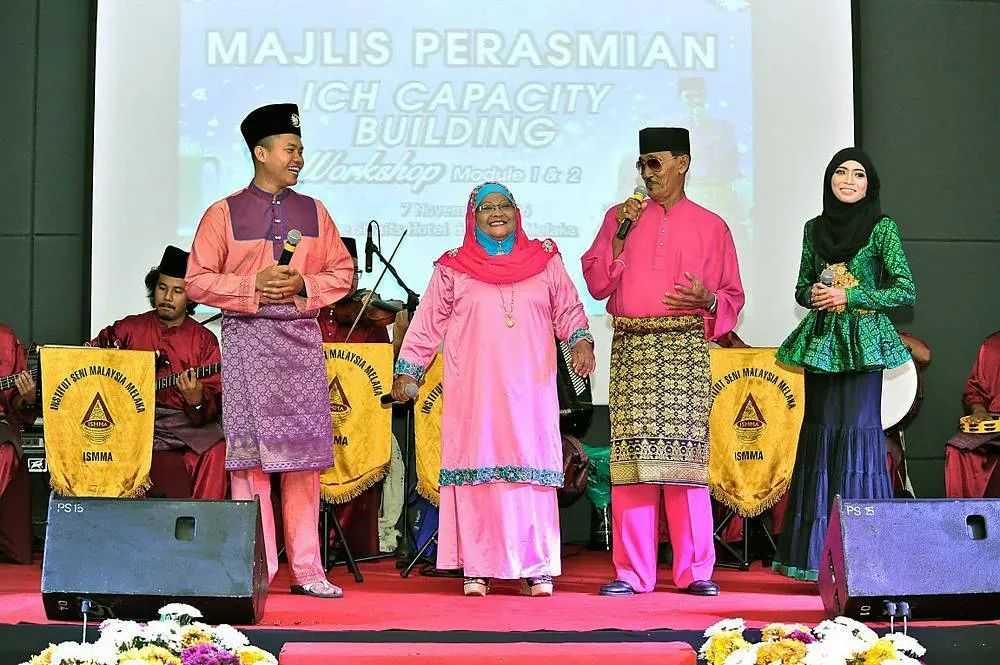
Source: Images from the Internet, if there is any infringement, please contact the removal of
Silat is a martial art of self-defense and survival rooted in the Malay Archipelago. Tracing back to the early days of the ancient kingdom of Langkasuka, Silat has developed into a good form of physical and mental training. It also encompasses traditional Malay clothing, Silat musical instruments, and customs.
There are many styles of Silat, inspired by human anatomy, nature, and the movements of animals. For example, the Malay Tiger style imitates the self-defense and attacking movements of a tiger, with a rhythm that has artistic aesthetics. In Malaysia alone, there are more than 150 known styles of Silat, whose names are derived from natural elements such as animals and plants.
Originally, Silat was practiced by warriors, who were seen as noble executors of justice. But now, the learners include masters, gurus (leaders in Hinduism or Sikhism), teachers, and students, who are the inheritors of this martial art. Training sessions are usually conducted in open spaces such as courtyards in the evening or at night, with the master teaching the forms.
A large number of practitioners have been trained, and more and more training centers are being established 各地. With this accelerated spread, Silat has increasingly transcended its status as a martial art and become a performing art. Therefore, it is now a popular health and leisure sport.
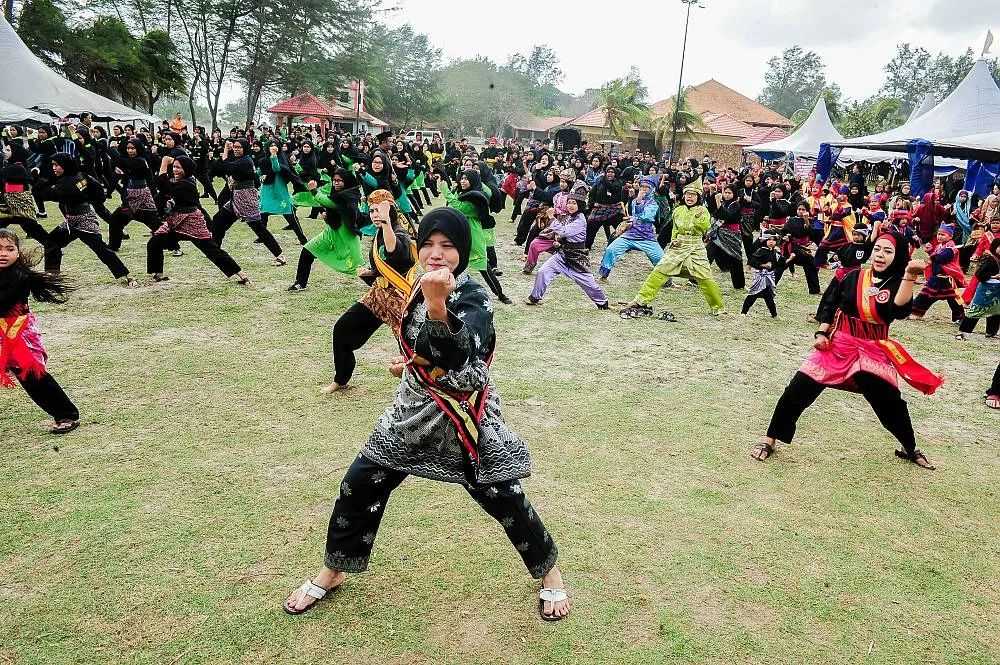
The Ong Chun/Wangchuan/Wangkang ceremony and related customs originated from the folk worship of the "Lord" who patrols on behalf of heaven. People believe that the "Lord" is a god who protects humans and the land from disasters. It developed in the southern Fujian region of China from the 15th to the 17th century and is now mainly concentrated in the coastal areas of Xiamen Bay and Quanzhou Bay, as well as in the Chinese community in Malacca, Malaysia.
Those who died at sea are considered "good brothers" who have become lonely, wandering souls. At the beginning of the ceremony, people gather by the sea to welcome the Lord to the temple or ancestral hall. At the same time, they erect lamp poles to summon the "good brothers" and liberate them from their suffering. In this way, the ceremony is regarded as "doing good deeds."
Performances are held at the front of the parade to clear the way for the Lord's barge (a wooden or paper model). These performances include Gaojia and Gezai opera, as well as various dance performances such as dragon and lion dances, puppet shows, and more.
This ceremony evokes the historical memory of the ancestors' voyages across the ocean, reshapes social connections in the face of sudden incidents such as shipwrecks, and respects the harmony between humans and the ocean. It also bears witness to the intercultural dialogue among communities.

Pantun is a form of Malay poetry used to express complex thoughts and emotions. It is the most widespread form of oral poetry in the coastal areas of Southeast Asia and has been sung in many parts of the region for at least 500 years.
Pantun has a clear a-b-a-b rhyme scheme and is most commonly composed of four lines. Pantun can be spread through music, song, and writing. 70% of the poems are dedicated to expressing love for lovers, family, community, and the natural world.
The poems can be performed at weddings, traditional ceremonies, and official celebrations. Pantun provides a socially acceptable way to express oneself euphemistically. It is also a tool for moral guidance, as the poems often contain religious and cultural values such as restraint, respect, kindness, and humility.
Pantun can also be used as a diplomatic method for resolving conflicts, as it offers a gentle way to raise important issues. The concepts of harmony with nature and flexibility in human relationships in the poems are also commendable. Pantun is formally taught in schools and art studios and can also be passed on informally.
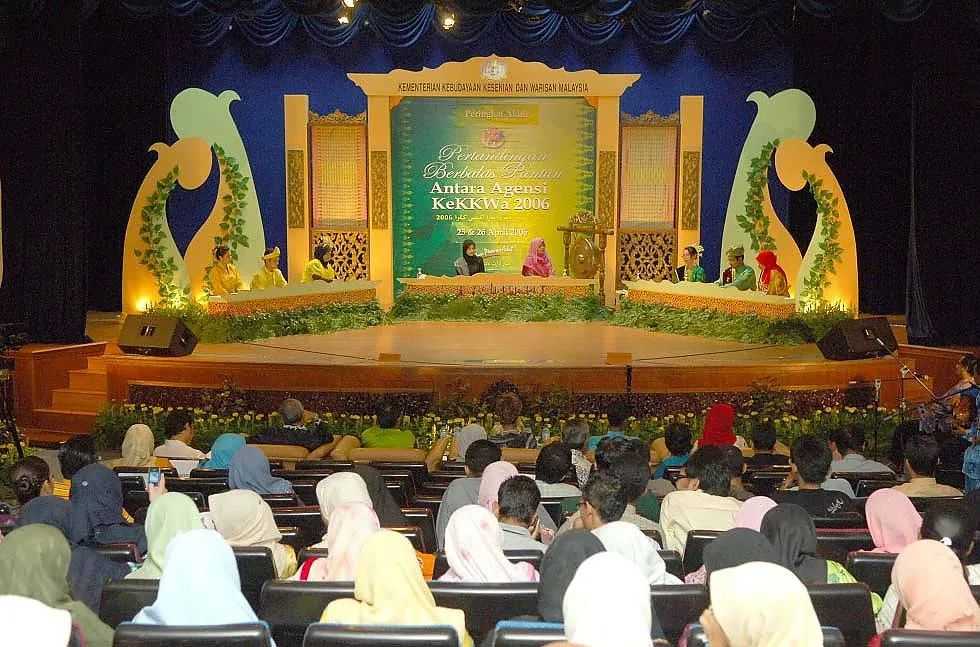
Source: Images from the Internet, if there is any infringement, please contact the removal of
Songket is a traditional handwoven fabric in Malaysia, woven by women from the Malay Peninsula and Sarawak. The term Songket refers to the decorative weaving technique used to make this fabric, which requires the insertion of gold or silver threads between the base lines. As a result, the additional threads seem to float on the colorful woven background, creating a decorative effect.
Songket is woven on a kek, a traditional two-treadle floor loom. After months of skilled handweaving by professional artisans, the exquisite fabric is finally completed. This weaving technique can be traced back to the 16th century and has been passed down from generation to generation. The style of Songket can be identified by the patterns designed using geometric shapes and organic elements such as flowers, birds, and insects.
Traditionally, only members of the royal family and their families were allowed to wear clothing made from Songket. However, today, Malays across the country can wear traditional ceremonial clothing made from Songket for royal investitures, weddings, birthday celebrations, festive occasions, and official national events. Although the Songket weaving technique has always been firmly in the hands of women, men can also participate in this practice by making the weaving equipment.
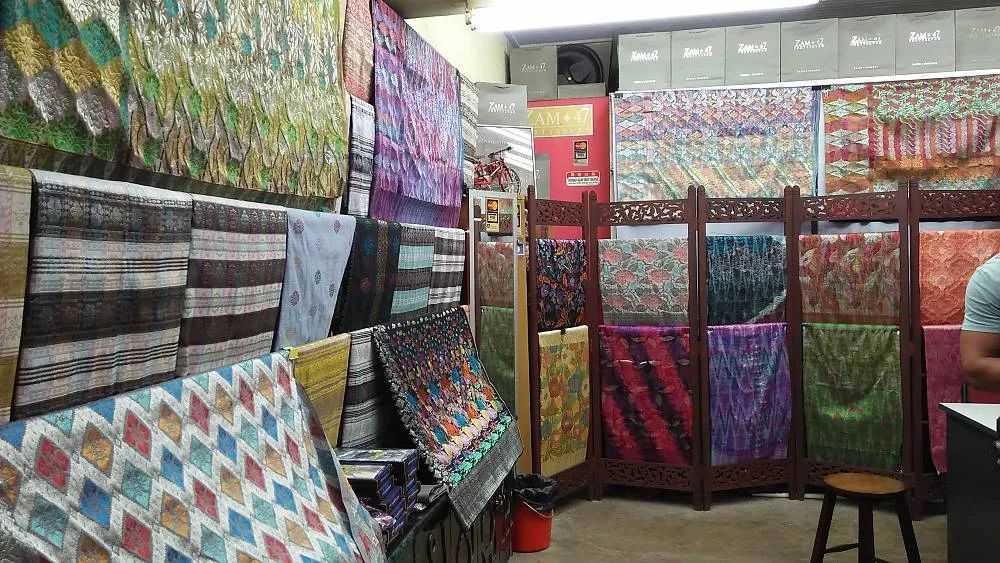
Source: Images from the Internet, if there is any infringement, please contact the removal of
Mek Mulung is a traditional Malaysian performance that includes acting, dialogue, singing, and dancing. It originated in the village of Wang Tep and is performed by a group of fifteen to twenty people, accompanied by traditional percussion and wind instruments such as drums, clappers, and gongs.
Mek Mulung follows a fixed structure and is performed in a large open room with the audience surrounding the performers. The main characters in a Mek Mulung performance are the king and the princess, both dressed in traditional costumes, along with shamans, maids, and enemies. Initially, all the performers were men, with some of them wearing women's clothing to play female roles. Now, both men and women can perform.
The origin of Mek Mulung was to celebrate and express gratitude after a good harvest. On the day before the performance, the artists and their neighbors, friends, and guests will hold a public banquet.
Traditionally, the knowledge and skills related to Mek Mulung were orally passed down by practitioners to their children. Today, this art is also taught in schools and universities and is spread through seminars, workshops, forums, cultural festivals, and celebrations. Participants regard this activity as a means to promote active social interaction and dialogue.
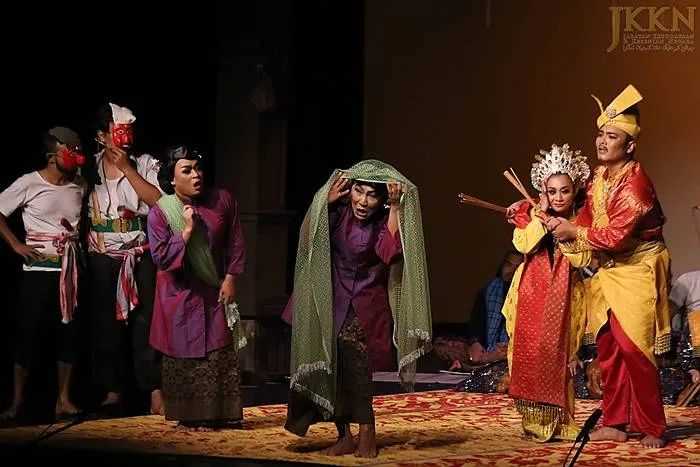
Source: Images from the Internet, if there is any infringement, please contact the removal of
Malaysia's breakfast culture plays an important role in the country's multi-ethnic society. This culture is widespread throughout Malaysia (including 14 states and federal territories), where people gather around food and spend time having breakfast together.
Breakfast culture is a living heritage related to traditional eating habits, including staple traditional foods such as nasi lemak, roti canai, and teh tarik. Whether in rural or urban areas, at home or in public places, breakfast culture is ubiquitous.
The Malays, Chinese, Indians, and other ethnic groups in Malaysia are both producers and consumers of food and actively participate in the practice of breakfast culture. The making and eating of Malaysian breakfast foods, although originally from a specific ethnic group, have since spread throughout the country and are loved by everyone, regardless of their ethnic background.
These foods are affordable and delicious and are welcomed by people from all walks of life as an affordable meal to start the day. This culture is passed down from generation to generation to ensure the sustainability of local traditional cooking methods, uniting locals of different ethnic groups and genders through traditional breakfast delicacies.
In addition to being a source of pride and an important part of Malaysia's culinary history, these breakfast foods have also become unique elements of culture and identity among the different ethnic groups in Malaysia.

Source: Images from the Internet, if there is any infringement, please contact the removal of


Oman's Intangible Cultural Heritage on UNESCO Lists and an Outstanding Practice
Oman's Intangible Cultural Heritage on UNESCO Lists and an Outstanding Practicemore
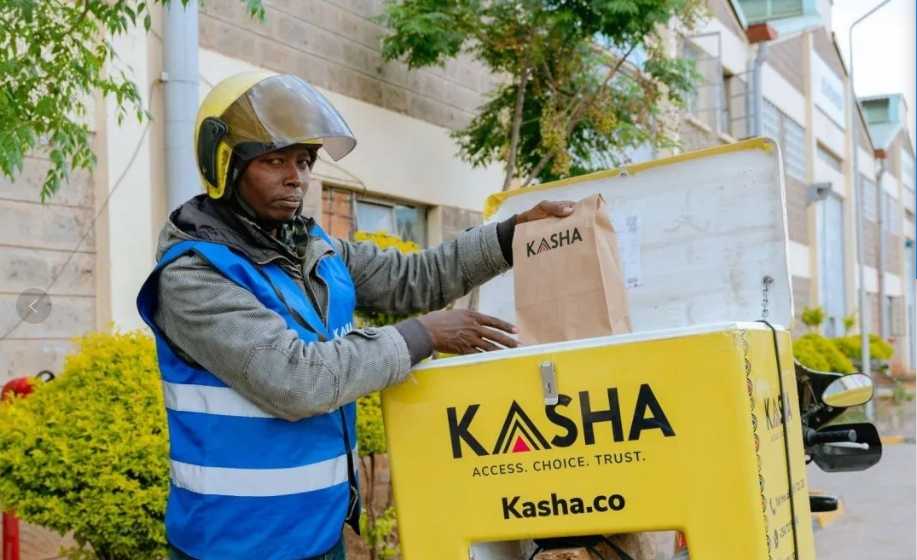
African Healthcare: Overcoming Challenges through Localized Technological Innovations
African Healthcare: Overcoming Challenges through Localized Technological Innovationsmore

Exquisite Global Destinations: A Guide to Unforgettable Adventures
Exquisite Global Destinations: A Guide to Unforgettable Adventuresmore

A Revolutionary Leap in Cancer Radiotherapy: Hope City's Breakthrough
A Revolutionary Leap in Cancer Radiotherapy: Hope City's Breakthroughmore

Smartphones and Cloud Computing: Transforming How Humanity Interacts with Data
Smartphones and Cloud Computing: Transforming How Humanity Interacts with Datamore

Iconic Global Landmarks: Architectural Wonders and Natural Marvels
Iconic Global Landmarks: Architectural Wonders and Natural Marvelsmore

The Internet of Things: A Transformative Force in 2045
The Internet of Things: A Transformative Force in 2045more

Explore Breathtaking National Parks Around the World
Explore Breathtaking National Parks Around the Worldmore

